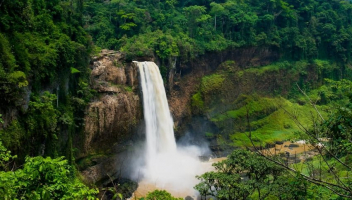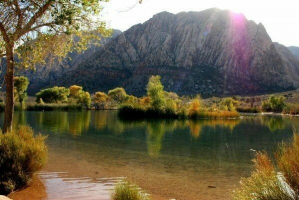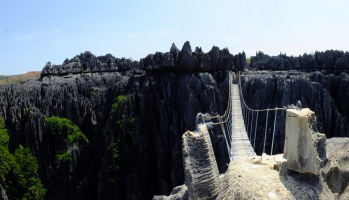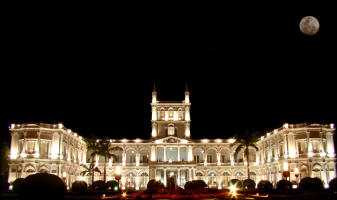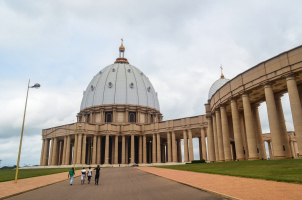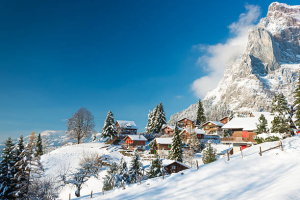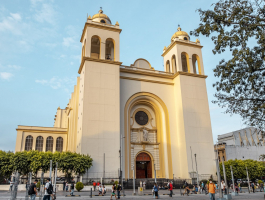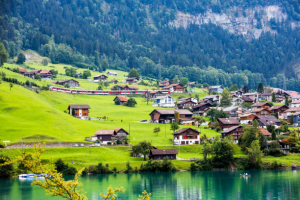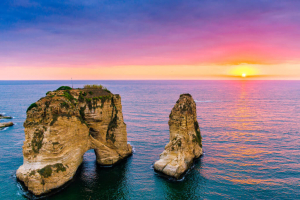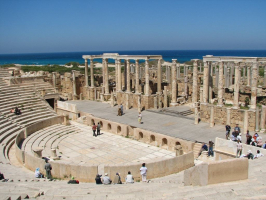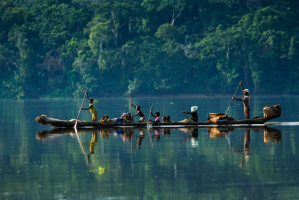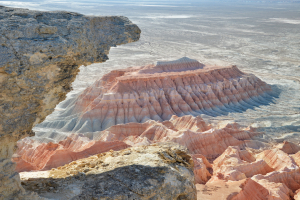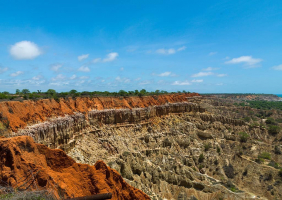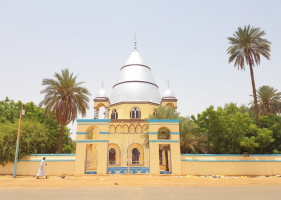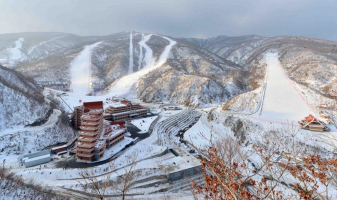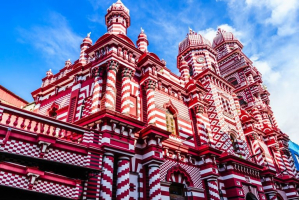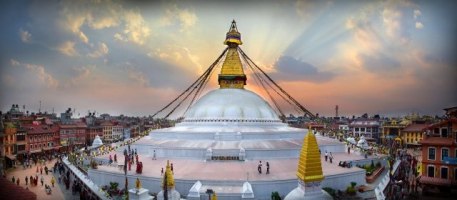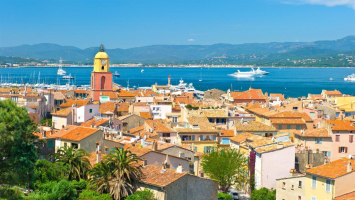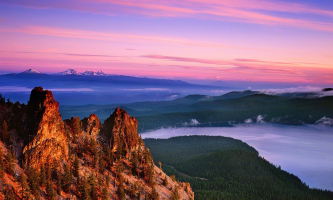Top 10 Best Places to Visit in Bridgetown
Bridgetown, the lively capital of Barbados, is a historical highlight of Barbados and worth spending some time seeing. Bridgetown, steeped in British colonial ... read more...history, emanates a decidedly English flavor with a laid-back West Indian vibe. Popular activities include perusing the duty-free stores on Broad Street, swimming in Carlisle Bay's blue seas, snorkeling and sailing cruises, and seeing the city's museums. Plan your stay here with a list of the top 10 Best Places to Visit in Bridgetown.
-
George Washington, destined to become the first President of the United States of America, spent about two months in Barbados in 1751. Barbados was his sole visit to a country outside of colonial America. This alone should make a tour of George Washington House, where he stayed while in Barbados, a must-do excursion for all American visitors. The House, which is currently under the management of the Barbados National Trust, is also of interest to other tourists, especially Barbadians, because it provides useful insights into life in 250-year-old Barbados.
The ground floor of the building is furnished in the manner in which it might have been in 1751. On display are such basic items as a four poster bed with a rather lumpy mattress surrounded by mosquito netting, which was much needed back then as protection against these little pests, a small face basin and ewer in one corner, and, under the bed, the all-important chamber pot, as there were no indoor bathroom facilities. Other rooms display other essentials for "civilised" living, such as seats of various types, a marble table top on which to set hot dishes, and numerous articles of tableware and silverware, some of which were salvaged from a nearby gully.
The building's second floor is wholly dedicated to exhibitions of goods typical of mid-eighteenth-century life, and the artifacts are richly documented with both visual and aural assistance. Pharmaceutical bottles, thumb lancets, and cupping glasses, which "were heated to create suction to bring blood to the skin's surface," are on display. An interesting piece is a reminder that Washington contracted small pox, a dangerous disease that was common at that time and quite regularly led in death to those who contracted it, thus Washington was fortunate in the doctor who cared him and helped restore him to health.
Google rating: 4.8/5.0
Location: Bridgetown, Barbados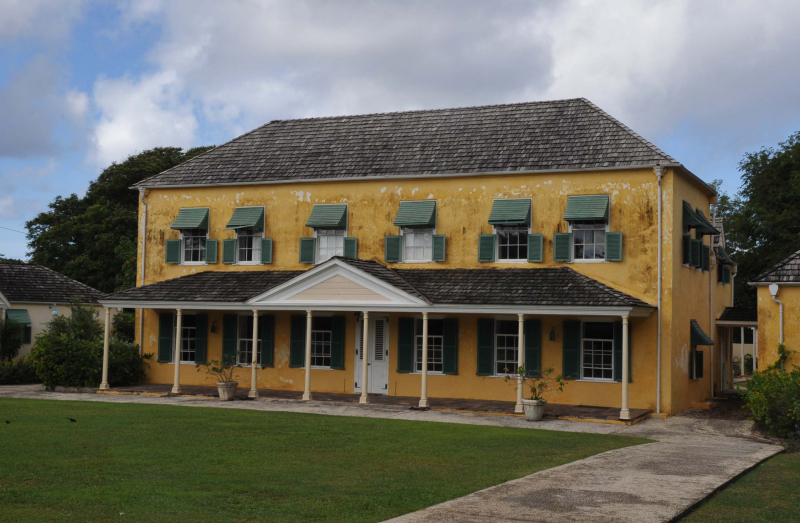
en.wikipedia.org -
The Barbados Garrison, largest in the British Colonies throughout the 18th and 19th centuries, is of immense historic interest and offers numerous elements, other than military, for those so inclined. It was founded in 1780 as the military headquarters for the Imperial Forces stationed here until 1905/6. However, it all started in 1705 with St. Ann's Fort on its current location. It is now the headquarters of the Barbados Defence Force, which includes the Barbados Coast Guard Force. The Barbados Cadet Corps headquarters are located on Garrison Road, overlooking the Savannah.
The Barbados National Armoury opened in 2004 inside the former naval magazine alongside St. Ann's Fort's walls. It houses Barbados' outstanding gun collection, which includes an Elizabethan cannon from 1600, the only one known to exist anywhere in the world. In 1790, the majestic Drill Hall was built on the ramparts of St. Ann's Fort, first as a soldiers' barracks and then as a commissariat. It is now known as the Officers' Mess, Sergeants' Mess, and Corporals' Mess.
Over the years the Garrison neighborhood has expanded and now encompasses the Savannah as well as several buildings in Bay Street and Hastings. This Savannah is one of Barbados' most popular recreation sites, with visitors ranging from babies to octogenarians. From before sunrise to long after sunset, one can observe walkers, joggers, rugby and basketball players, skateboarders, kite flyers, gossipers, lovers, and those who simply want to relax and watch the world go by.
Importantly, the Savannah is the home of the Barbados Turf Club, whose Grand Stand and surrounding areas are crowded to capacity on Gold Cup day, which is held every year on the first Saturday in March. Other race meets scheduled throughout the year provide nice and relaxed events for supporters and casual onlookers to enjoy. It was first utilized as a race track by military officers whose horses competed against those of affluent plantation owners.
Google rating: 4.7/5.0
Address: Hwy. 7, Garrison, St. Michael, Bridgetown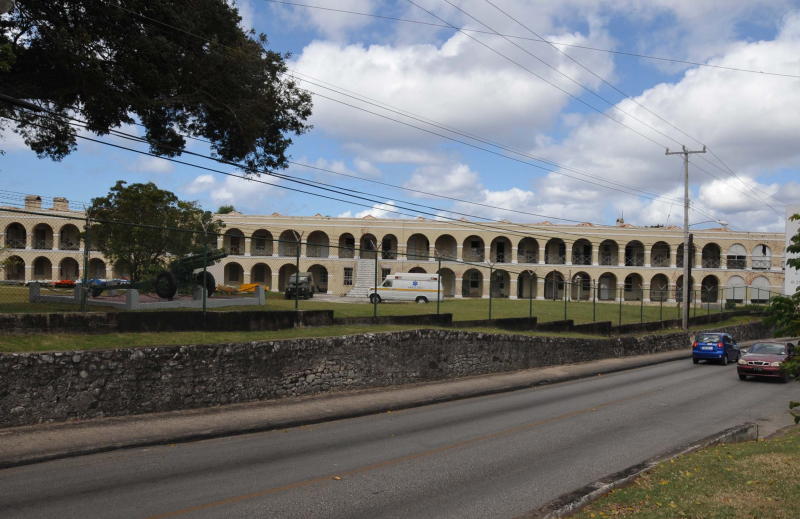
viator.com -
Carlisle Cove is a lovely, peaceful bay with one of the island's largest beaches and dazzling, quiet, shallow seas. Home to the 'Boatyard', many cruise ship guests can spend the full day here. Exercise, jogging, swimming, snorkeling, body or 'boogie' boarding, eating, drinking, or simply sitting in a beach chair watching the yachts and other small vessels anchored in the bay as they gently move from side to side on the water has something for everyone at Carlisle Bay. With car parking facilities, adequate access for those with mobility challenges, toilets, showers and changing rooms, and a lifeguard on duty, you will not want to leave Carlisle Bay in Barbados.
Carlisle Bay in Barbados has also been developed into a very popular and oft frequented underwater marine park. It is especially well known in Barbados for its scuba diving opportunities, with no less than six shipwrecks in close proximity: Berwind, a 70ft long First World War French tug boat sunk by her own crew in 1919; Ce-trek, a derelict cement boat that was sunk in 1986; Eillon, a 110ft former drug boat freighter that was sunk in 1996 as part of the marine park; Bajan Queen, Barbados' first tug boat when Bridgetown harbour was built in the 1960s, was sunk in 2002; Cornwallis, a Canadian freighter sunk by German u-boat torpedo during the Second World War; and a naval landing barge originally found in Carlisle Bay in Barbados. Beginner to expert divers will not be disappointed in their search for hidden underwater treasures if they visit Carlisle Bay in Barbados.Sunken ships are a source of numerous antiques and ship paraphernalia, including anchors, pylons, bottles, cannons, and cannon balls mark a path from one ship to the next. Sea horses, rays, barracudas, octopus, reef squid, mackerel, moray eel, and frog fish, as well as the more uncommon mantis shrimps, lettuce slugs, and pencil stars, all call the wrecks home.
Google rating: 4.7/5.0
Location: Bay Street, St. Michael, Bridgetown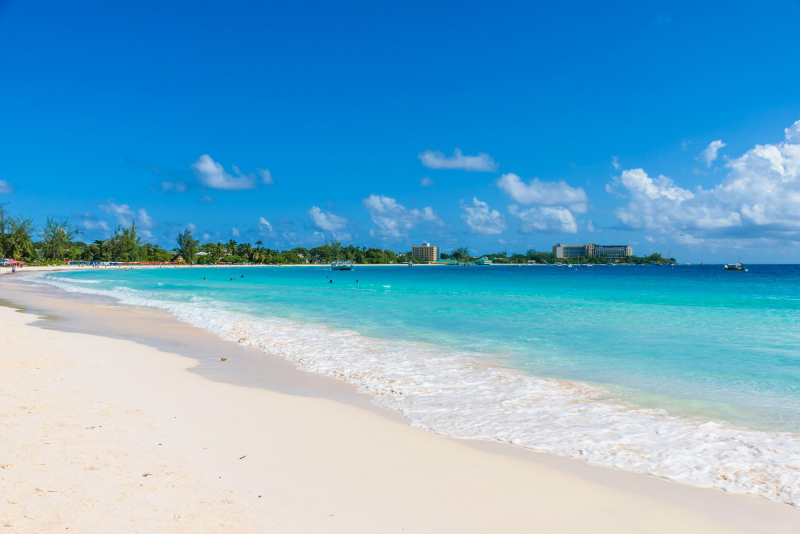
sandals.com 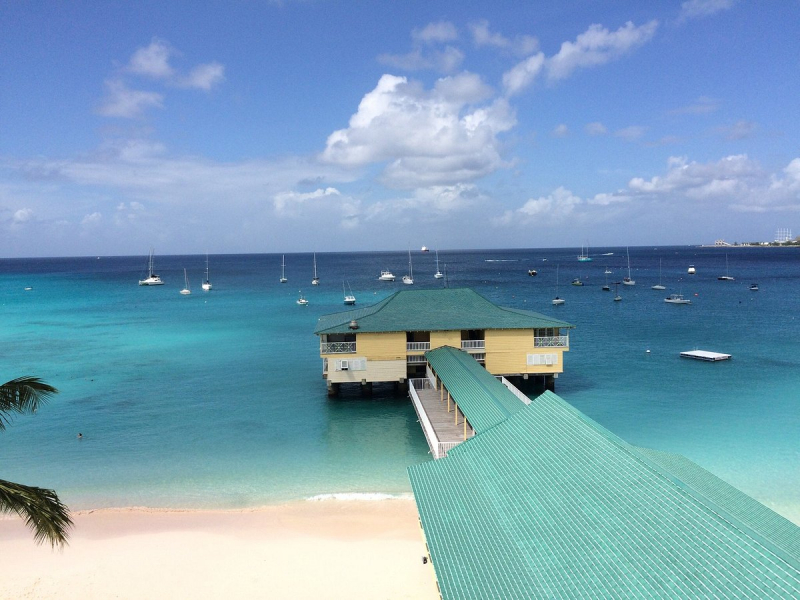
tripadvisor.com -
Queen's Park is a national park in Barbados. The park was the former home of the Commander of the British Troops stationed in Barbados for the West Indies. Situated in the northeastern segment of the capital city Bridgetown, the park's borders are roughly Roebuck and Crumpton Streets to the north and west, and Halls and Constitution Roads located east and south. It shares parts of its grounds with Harrison College and the Headquarters of the Barbados Transport Board. Like some of the island's other national parks, Queen's Park remains a site of historic interest.
Queen's Park House, is a two-storey structure, built in 1786 located inside the park. The house was initially used as the residence of the Commander in Chief of the British Garrison when they were permanently stationed in Barbados at St Anne's Fort from 1780 to 1905. In the first year that the house was rented for this purpose it was destroyed by the great hurricane of 1780.Nevertheless, on December 27, 1782 the Crown bought the property from Edward Falkinham and the house was rebuilt two years later.
At one time there was a sizable barracks of soldiers in the southern part of the property. When the British Garrison presence's at St. Ann's Fort was phased out in 1905, the Barbados Government then purchased the property and the Adjutant-General's Quarters and leased to the Vestry of St Michael. It was opened as a national park on June 10, 1909.
Google rating: 4.5/5.0
Location: Constitution Road, Bridgetown, Saint Michael
-
Nidhe Israel Synagogue is one of the best Places to Visit in Bridgetown. Nidhe Israel Synagogue, the 'Synagogue of the Scattered of Israel', is one of the oldest synagogues in the Western Hemisphere. It was established by Sephardic Jewish settlers that arrived in Barbados from Recife, Brazil about 1628, soon after English occupation of the island in 1627. The building used to be roughly 2,000 square feet in size and could hold about 300 people.
Nidhe Israel Synagogue, founded in 1654, is one of the oldest synagogues in the Western Hemisphere. The synagogue was named a UNESCO World Heritage Site in 2011. The current edifice was built in 1833 after the former structure was destroyed by a cyclone. Interesting aspects of the synagogue include the marble accents and mahogany furniture, while the tombstones in the surrounding cemetery originate from the 1630s. The modest museum tells the fascinating narrative of the Jewish community in Barbados and their role in the island's wealthy sugar business. The synagogue was abandoned in 1929, but the Jewish community preserved and renovated it in 1983.
Google rating: 4.4/5.0
Location: Synagogue Ln, Bridgetown, Barbados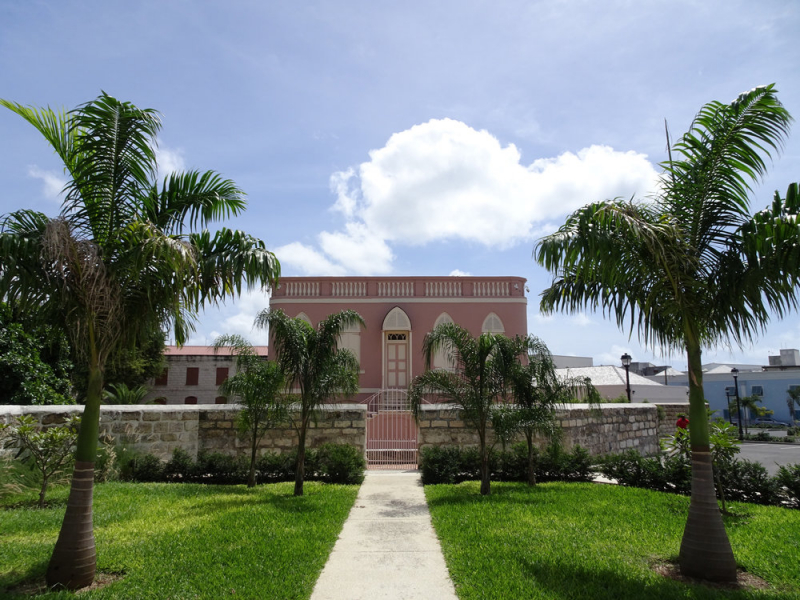
synagoguehistoricdistrict.com 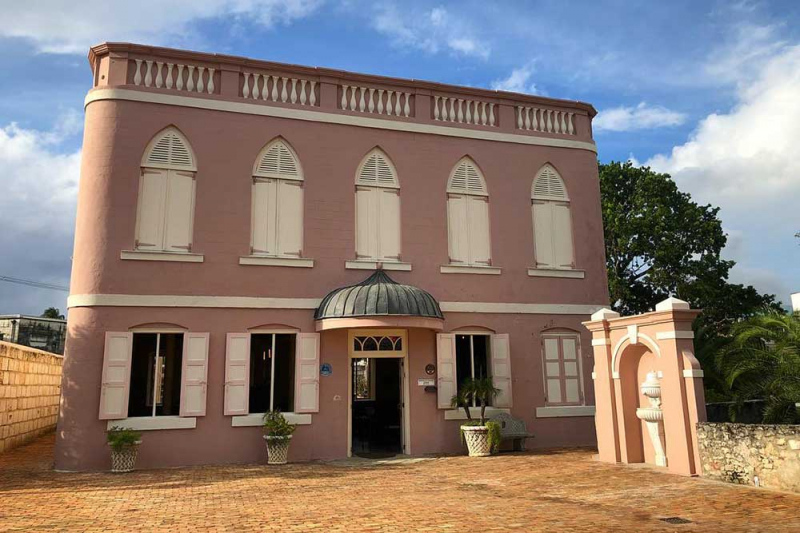
synagoguehistoricdistrict.com -
The Barbados Museum sits quite impressively on the outskirts of the Garrison Savannah in the parish of St. Michael. Its current location was once the home of the former British Military Prison and became the Headquarters of the Barbados Museum and Historical Society in 1930. A bit of history to note is that the prison's top floor was built in 1817 and the bottom floor built in 1853.
This building is not only historical in stature but it also houses a wealth of history and art that are all accessible to the general public of Barbados and visitors alike. Trips down memory lane are tapped into once one walks through the doors of the Barbados Museum and become exposed to Barbados' military history, geographic nature, rare historical maps, eighteenth century plantation house furniture, information on the lives and upbringings of 'Yesterday's Children', African Heritage and even artifacts from the Amerindians who were the early inhabitants of the Caribbean islands.
While on the island of Barbados, you are more than welcome to take a trip to the Barbados Museum where you can register as a volunteer and participate in the many activities available. Every year in the month of December, an Art Festival is put on by the Historical Society of the Barbados Museum. This is a time when local arts and crafts are displayed on the grounds of the museum that truly depict the essence of Barbados and its people. The Gift Shop at the Barbados Museum is filled with authentic art that is available for purchase while its Heritage Gift Collection consists of books and journals that include antique prints and maps of Barbados.
Google rating: 4.3/5.0
Location: Dalkeith Road, Bridgetown, Barbados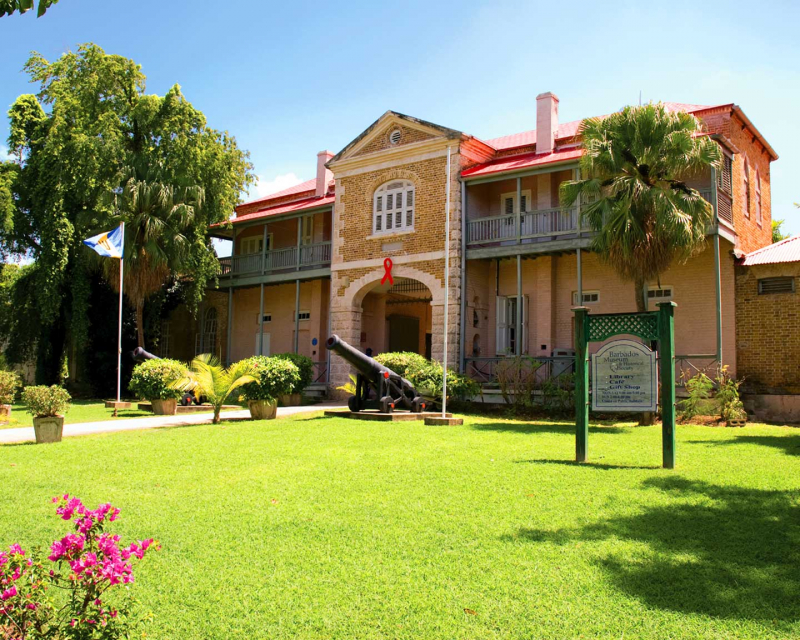
tripadvisor.co.uk -
The origins of this area, located in the centre of our capital city, may be traced back to the early 1800's. An spectacular statue of Lord Horatio Nelson was erected here in 1813 to commemorate the Battle of Trafalgar in 1805, in which the British force led by Admiral Lord Nelson beat a combined French and Spanish navy. Trafalgar Square was the name of the region. The name Trafalgar Square survived until 1999 when it was formally renamed to National Heroes Square in recognition of the national heroes of Barbados. The Lord Nelson statue was relocated to the Barbados Museum and Historical Society in 2020.
It's a fascinating site to visit. Despite its location in the heart of the city, it maintains a sense of reverence. The elegant Dolphin Fountain commemorates the delivery of piped water to Bridgetown in 1861, and the cenotaph honors Barbadians who died in war. The historic Parliament Buildings, which contain the National Heroes Gallery and the Museum of Parliament and are located opposite National Heroes Square, are where the Lower and Upper Chambers conduct their business.
Google rating: 4.2/5.0
Location: Bridgetown
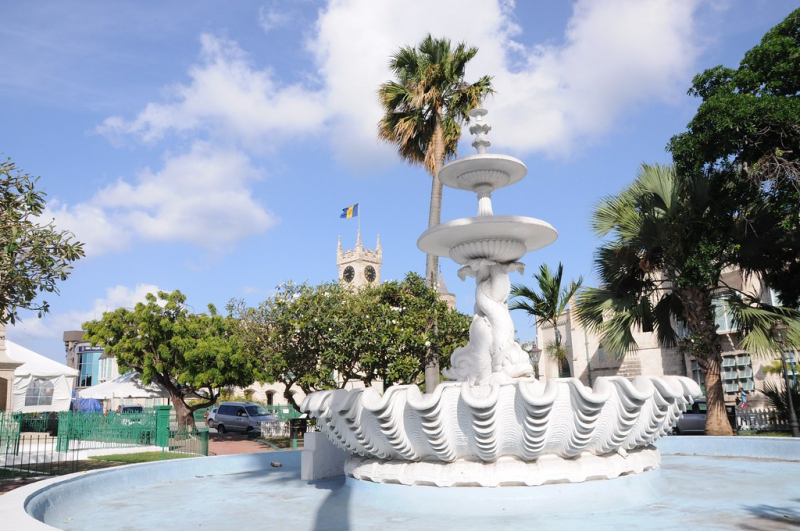
flickr.com -
The Cathedral of St. Michael and All Angels, originally known as the Church of St. Michael was first built in 1628 on the site which is now occupied by the other city church, St. Mary's on Lower Broad Street in the capital city of Bridgetown, Barbados. This initial wooden structure rotted very quickly and soon had to be replaced. The church was then rebuilt in 1641 at the present location of the Cathedral but this church too, was constructed of wood and was also very small especially when compared to the colossal structure which exists today. In any case the new church was rebuilt on a parcel of land that was donated by Col. William Sharpe for the expressed purpose of the rebuilding and expansion of the church.
The new church building had some very impressive architectural elements; the beautiful barrel vaulted ceiling and the arched ceiling (the inverted boat’s prow) above the altar which resembles an upturned boat from the outside are just two examples. This exceptional model of master carpentry was, at one time, considered to be the widest ceiling in the world. The cathedral also features galleries running along three sides of the church (north, south and west) as well as some very striking examples of stained glass windows, quite like the one featuring Michael, the arch angel, with a drawn sword which is located directly the behind the altar.
Google rating: 4.2/5.0
Location: St Michael Row, Bridgetown, Barbados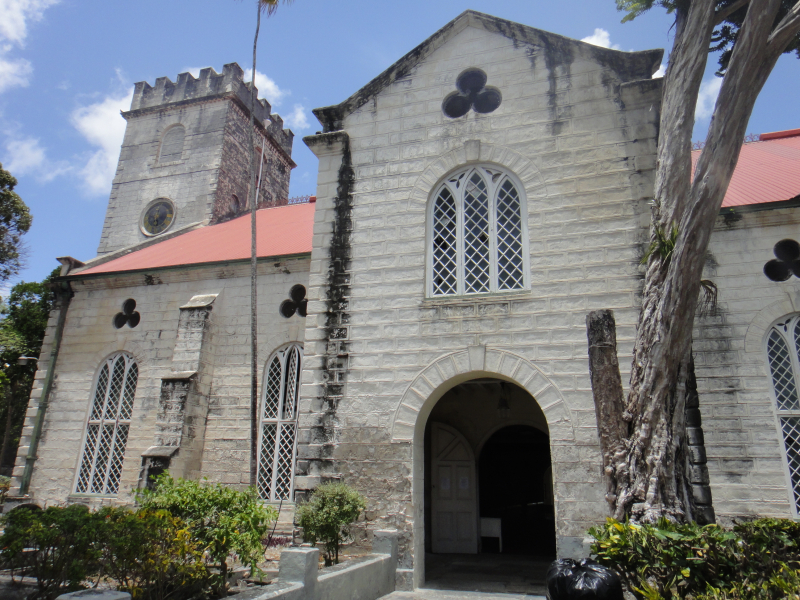
flickr.com 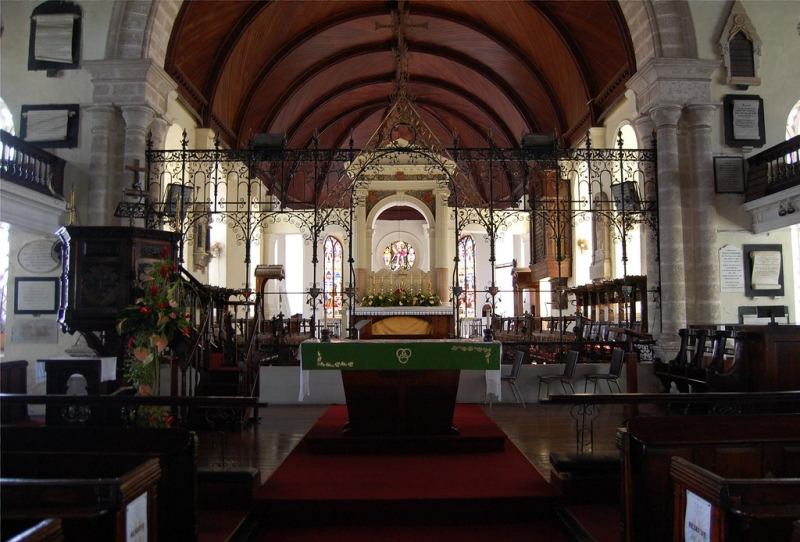
flickr.com -
Chamberlain Bridge is one of the best Places to Visit in Bridgetown. The Chamberlain Bridge is a bridge in Bridgetown, the capital and largest city of the nation of Barbados. In 1872, it was a swing bridge across the marine inlet channel of the inner basin of the Careenage (Constitution River) at Carlisle Bay. The outmoded steel structure was dismantled and rebuilt in 2005–2006 as a lifting bridge with the state-of the-art modern technology of an all-composite single-leaf bascule design. This design is a counterweighted bridge span that pivots upward, permitting pleasure craft to pass through an inlet channel. The bridge was built using fibre-reinforced plastic (FRP), which is lighter, long lasting and non-corrosive.
There are two bridges in use in Bridgetown. The Charles Duncan O'Neal Bridge is large and modern in design, commencing from the street east of National Heroes Square, while Chamberlain Bridge is the more "decorative humpbacked bridge" built to replace the original swing bridge after the Great Hurricane with funds generated through the efforts of the then British Colonial Secretary, Joseph Chamberlain (1836–1914).
Google rating: 4.1/5.0
Location: Barbados
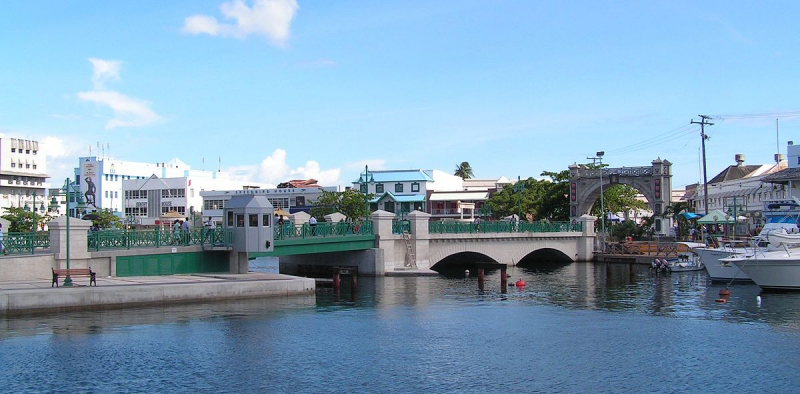
en.wikipedia.org -
Located at the top of Broad Street, in the capital city of Bridgetown, Barbados, these historic Parliament Buildings (once known as the Public Buildings) are home to the House of Assembly and Senate. Packing more than 350 years of history, these buildings were built from local limestone and completed in 1874 by a Gothic Architecture. These buildings were built as a primary source of adequate accommodation for the Houses of Parliament, to consolidate the major public offices and to safely and securely file any of Barbados' Public Records.
These imposing nineteenthth century Parliament Buildings of Barbados are filled with a great amount of craftsmanship and detail that the whole island can be justly proud of. In 1873, the East Wing was completed and this housed the Chambers and offices of the Legislative Council (later the Senate), the House of Assembly, the Attorney General, the Solicitor General and the Legal Draftsman (later Chief Parliamentary Counsel) had offices. Also in the East Wing of the Parliament Buildings of Barbados, one can find stained glass windows that ably represent British Sovereigns from James I to Queen Victoria (and include Oliver Cromwell). These stained glass windows were designed by both of Barbados' very own Mr. Thomas Hawkesley, and his brother Charles Hawkesley. The designs were then passed onto Messrs. Clayton Black & White of Parliament Buildings, Barbados Pocket Guide& Bell, a London firm that proceeded with the manufacturing process.
Google rating: 4.0/5.0
Location: Broad Street, Bridgetown, Barbados
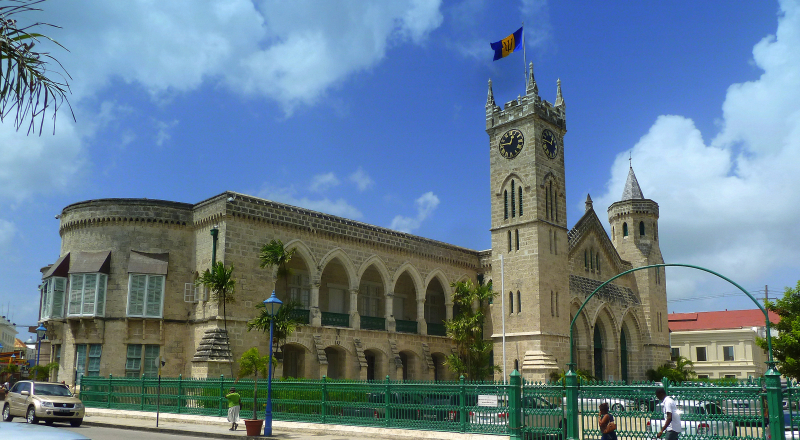
en.wikipedia.org 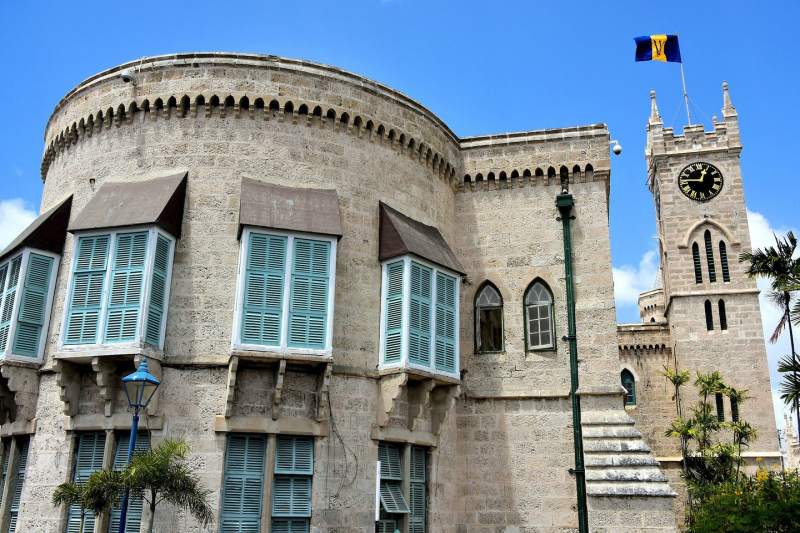
encirclephotos.com












